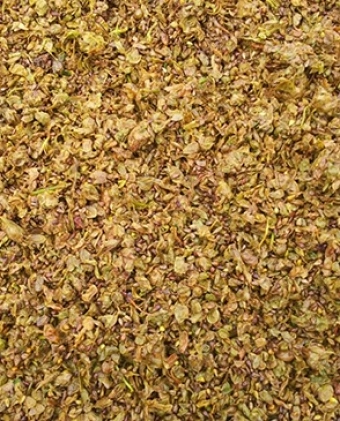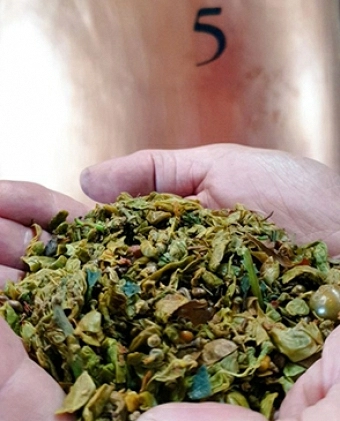The Orujo
There is some confusion when it comes to naming one of the most traditional alcoholic products in Spain: orujo brandy.
Brandy, as it is known, is not a single alcoholic product, but the result of the distillate process to which a pre-fermented raw material is subjected, and which has a high alcoholic content: a minimum of 37.5 % ABV. There are different types of brandy in Spain and across the world which are made from different raw materials: fruits, cereals, vegetables and grains. The Spanish term aguardiente (similar to the term “firewater”) is a similar concept, being a spirit distilled from local raw materials with an ABV of 29 to 60 %.
In our case, we speak of orujo brandy or marc brandy. Once the wineries have obtained the wine from the extraction and fermentation of the grape must (red varieties that have produced red wine), its remains, the bagasse of the grape, its pomace, or “orujo”, is transported to our distillation plant where the process of low-pressure steam distillation is carried out. Where the orujo has not been fermented in the winery with the wine (white and rosé), the fermentation of the orujo is carried out in the distillation plant itself, before being distilled.
Orujo brandy is known as grappa in Italy, marc in France, and bagaçeira in Portugal.
Orujo: According to the RAE (Royal Spanish Academy), it has several meanings: "grape trellis, after squeezing and extracting the juice". In this case, it refers to the raw material. Due to its widespread use and regulation, however, it is used as a synonym for brandy.
Therefore, while it is acceptable to employ the terms aguardiente, brandy, and orujo, the term which most accurately designates our product is orujo brandy, as is indicated by the type of alcohol and the raw material from which it is made.
In most cases, when speaking of “orujo blanco” (white pomace), it is orujo brandy which is being referred to.
REGULATION OF ORUJO BRANDY
Spanish Regulation 110/2008
Orujo brandy or orujo
- Orujo brandy, or orujo, is a spirit drink which meets the following conditions:
- It is obtained exclusively from fermented and distilled grape orujo, either directly by water vapor or after the addition of water.
- The proportion of lees which may be added to the marc shall not exceed 25 kg of lees per 100 kg of orujo.
- The quantity of the alcohol derived from the lees shall not exceed 35 % of the total quantity of alcohol in the finished product.
- Distillation shall take place in the presence of the orujo at less than 86 % ABV.
- Redistillation at the same alcoholic strength is authorised.
- The content of volatile substances shall be 140 g/hl or more of alcohol at 100 % ABV, and the maximum methanol content shall be 1,000 g/hl of alcohol at 100 % ABV.
- The minimum alcoholic strength of orujo brandy shall be 37.5 % ABV.
- No alcohol may be added, diluted or not, as defined in paragraph 5 of Annex I.
- Orujo brandy or orujo shall not be flavoured. This does not exclude traditional production methods.
- Orujo brandy or orujo may contain added caramel only for the purpose of adapting the colour.
LIQUOR REGULATION
Spanish Regulation 110/2008
Liquor is the spirit drink
- With a minimum sugar content, expressed as invert sugar, of 100 g/l.
- Obtained by the flavouring of ethyl alcohol of agricultural origin, or a distillate of agricultural origin, or one or more spirit drinks, or a mixture of the above-mentioned products, sweetened, and with the addition of products of agricultural origin or foodstuffs such as cream, milk or other dairy products, fruit, wine, aromatized wine, as defined in Spanish Regulation (EEC) No 1601/ 91 of the Council of 10 June 1991, laying down general rules on the definition, description and presentation of aromatised wine, aromatised wine-based drinks and aromatised wine-product cocktails (1).
- The minimum alcoholic strength of the liquor shall be 15 % ABV.



